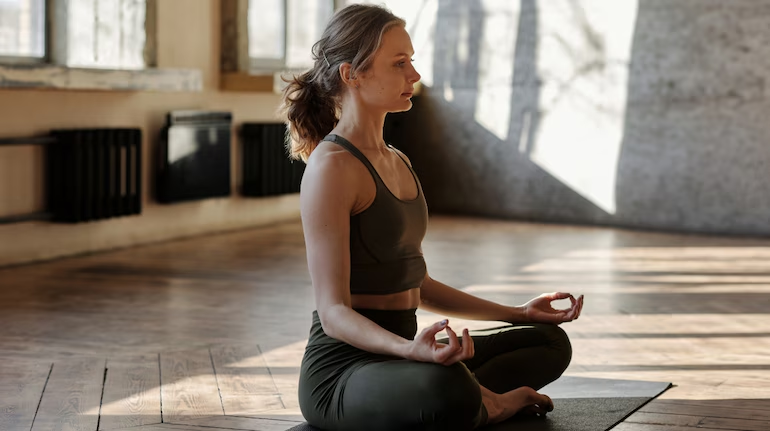Mindfulness meditation can help relieve stress and increase mental clarity by focusing on accepting each moment as it comes without judgment or bias.
Studies indicate that mindfulness may help relieve symptoms of depression, anxiety and low mood; however, it must be remembered that mindfulness isn’t a quick fix and may take longer for some people than expected to have its intended effects.
1. Observe Your Thoughts
At the core of mindfulness lies present-moment awareness. Being fully present helps reduce stress and improve clarity by eliminating many of the unnecessary thoughts triggered by fight-or-flight stress responses.
Observing your thoughts doesn’t require challenging or dismissing them – rather, it provides an opportunity to recognize them without getting lost in them. Like being on the bank of a river watching the water flow by; thinking is just another form of flow that needs monitoring.
Practice mindful observation throughout your day, even while performing mundane activities like brushing teeth or walking to work. Make the observations intentional by setting an hourly timer or placing reminder notes around your home or office as reminders to take a minute and notice what’s on your mind.
One study discovered that engaging in mindful activities could help individuals approach work more positively and feel less stressed about job performance, possibly by inhibiting the fight-or-flight stress response so they can focus more intently on tasks without worrying about potential outcomes. This finding supports the theory that mindfulness can reduce stress and enhance mental health, though larger samples would be required to confirm these claims.
2. Focus on Your Breath
Mindfulness meditation helps you become more self-aware of both your thoughts and body sensations, as well as helping to slow your breathing – which may have an indirect positive impact on health.
Mindfulness has been shown to significantly lower stress levels, including perceived stress levels, by decreasing amygdala responses to stressors. When activated during fight-or-flight mode, brain sends signals throughout your body increasing blood pressure and heart rate as well as priming muscles for action. Stressful situations make it hard for us to focus on work, relationships or daily tasks – with mindfulness practice you can learn how to better manage stress while improving concentration skills and increasing ability.
Focusing on your breath requires awareness of different parts of your body, such as feeling your belly move up and down with each breath. A mental note like “in” and “out” is an easy way to keep track of where your attention should be focused; just bring your thoughts back around when they wander off-track. If they do wander off track at any point, just gently bring it back on track by reminding yourself about breathing again.
Researchers conducted a study published in Mindfulness that split 47 healthy young adults into two groups. One group received an Android phone with a 20-minute guided body scan adapted from Mindfulness-Based Stress Reduction (MBSR), and another received an audiobook to listen to. Participants of both sessions focused on momentary physical sensations beginning from their feet up until reaching their heads during each body scan session.
3. Observe Your Body
Observing your body is a fundamental mindfulness practice. Start by sitting comfortably, either on a chair or the floor with back straight but not stiff, before focusing on natural breath: how your lungs inflate and deflate and where in the body the breath travels–upper chest, belly, front back or sides of body. Try not to judge what your breath means to you; observe with curiosity.
Once you’ve acknowledged how your body feels, pay close attention to subtle sensations such as an itch or tingle before shifting focus onto other parts of your body systematically – moving from head to toe in 20 second increments until complete. Or try doing a body scan meditation whereby each part is addressed for 20 seconds to one minute at a time.
Mindfulness can be an extremely effective tool in relieving anxiety, stress and depression. But it should be remembered that mindfulness doesn’t provide an instant solution; rather it may take time. Group mindfulness training with a qualified teacher may also prove beneficial; this will ensure you make the most out of your meditation practice without falling prey to potential pitfalls such as when dealing with stressful situations that make us anxious; mindfulness helps us calm ourselves so we respond logically instead of emotionally.
4. Take a Deep Breath
Mindful breathing can be one of the best tools to reduce stress. Commonly known as diaphragmatic or belly breathing, mindful breathing simply involves paying attention to each inhale and exhale of your breath – rather than dwelling on what thoughts arise when trying to breathe deeply. A few minutes of deep breathing may provide immediate relief when feeling overwhelmed or anxious.
The amygdala, the part of your brain responsible for sensing danger, triggers a response that floods your body with hormones to prepare it to fight or flee – increasing heart rate, blood flow to muscles, heightening senses etc. Mindfulness can slow this reaction so you’re better able to assess situations calmly and make sound decisions.
One study demonstrated that people who engaged in mindfulness-based stress reduction (MBSR) demonstrated greater levels of self-compassion compared to those who didn’t, leading to improved relationships both internally and externally, thus decreasing stress and depression levels.
Mindfulness takes practice, and some days may be easier than others. But mindfulness will build resilience and awareness that will enable you to navigate life’s ups and downs with greater ease, self-acceptance, and happiness – not to mention research supporting its effect in reducing chronic disease risk. If you want to learn more about mindfulness check out our free online course or download our app with daily guided meditations and other practices for daily mindfulness practices!


